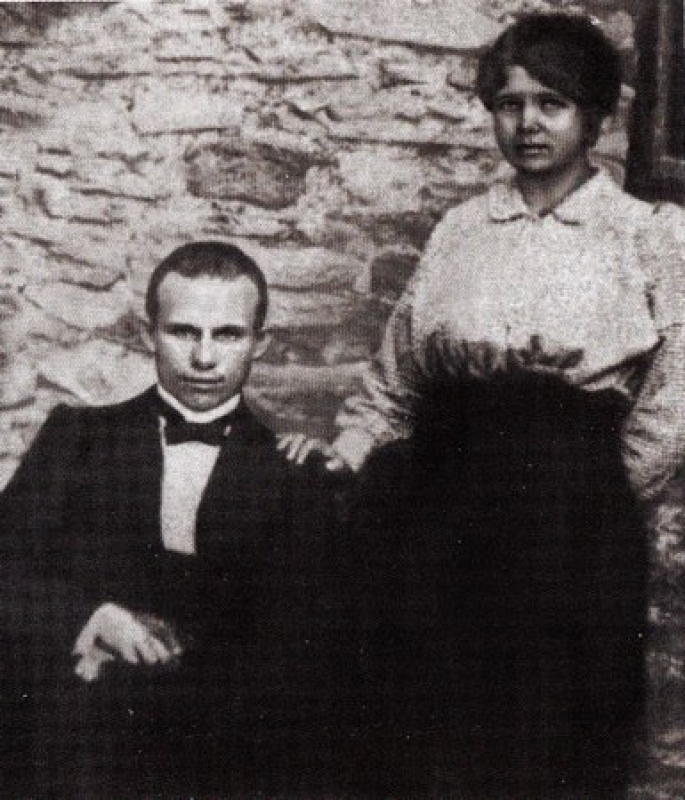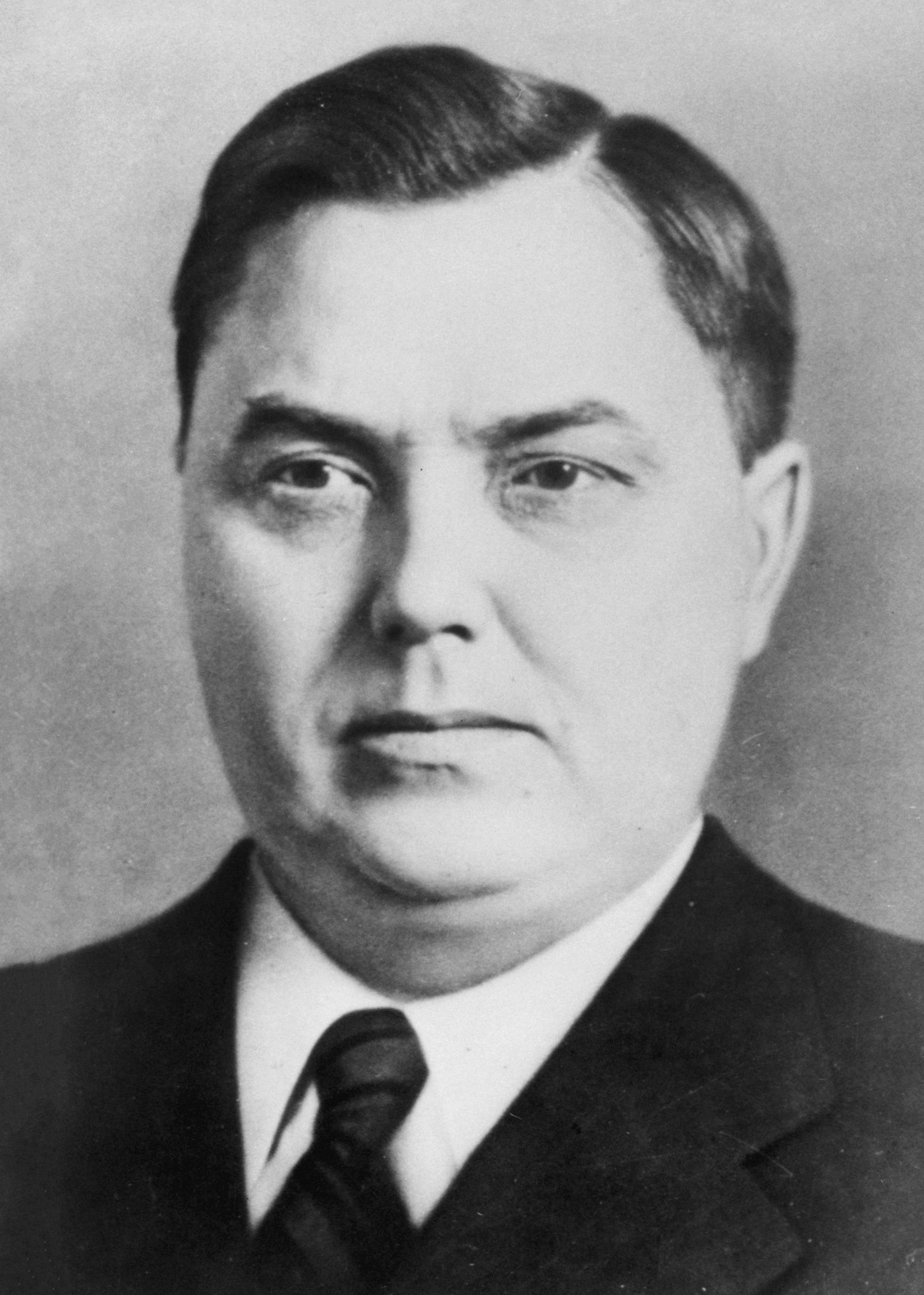|
Operation Lentil (Caucasus)
The deportation of the Chechens and Ingush (, ) also known as Operation Lentil (; ) and the Aardakh genocide, was the Soviet forced transfer of the whole of the Vainakh ( Chechen and Ingush) populations of the North Caucasus to Central Asia on 23 February 1944, during World War II. The expulsion was ordered by NKVD chief Lavrentiy Beria after approval by Soviet leader and dictator Joseph Stalin as part of a Soviet forced settlement program and population transfer that affected several million members of ethnic minorities in the Soviet Union between the 1930s and the 1950s. The deportation was prepared from at least October 1943 and 19,000 officers as well as 100,000 NKVD soldiers from all over the USSR participated in this operation. The deportation encompassed their entire nations, as well as the liquidation of the Checheno-Ingush Autonomous Soviet Socialist Republic. The demographic consequences of this eviction were catastrophic and far-reaching: of the 496,000 Chechens ... [...More Info...] [...Related Items...] OR: [Wikipedia] [Google] [Baidu] |
Population Transfer In The Soviet Union
From 1930 to 1952, the government of the Soviet Union, on the orders of Soviet leader Joseph Stalin and under the direction of the NKVD official Lavrentiy Beria, forcibly transferred populations of various groups. These actions may be classified into the following broad categories: deportations of "anti-Soviet" categories of population (often classified as "enemies of the people"), deportations of entire nationalities, labor force transfer, and organized migrations in opposite directions to fill ethnically cleansed territories. Dekulakization marked the first time that an entire class was deported, whereas the deportation of Soviet Koreans in 1937 marked the precedent of a specific ethnic deportation of an entire nationality. In most cases, their destinations were underpopulated remote areas (see Forced settlements in the Soviet Union). This includes deportations to the Soviet Union of non-Soviet citizens from countries outside the USSR. It has been estimated that, in their ... [...More Info...] [...Related Items...] OR: [Wikipedia] [Google] [Baidu] |
Nikita Khrushchev
Nikita Sergeyevich Khrushchev (– 11 September 1971) was the General Secretary of the Communist Party of the Soviet Union, First Secretary of the Communist Party of the Soviet Union from 1953 to 1964 and the Premier of the Soviet Union, Chairman of the Council of Ministers (premier) from 1958 to 1964. During his tenure, he stunned the communist world with his denunciation of his predecessor Joseph Stalin and embarked on a campaign of de-Stalinization with his key ally Anastas Mikoyan. Khrushchev sponsored the early Soviet space program and presided over various domestic reforms. After some false starts, and a Cuban Missile Crisis, narrowly avoided nuclear war over Cuba, he conducted successful negotiations with the United States to reduce Cold War tensions. In 1964, the Kremlin circle Nikita Khrushchev#Removal, stripped him of power, replacing him with Leonid Brezhnev as the First Secretary and Alexei Kosygin as the Premier. Khrushchev was born in a village in western Russia. ... [...More Info...] [...Related Items...] OR: [Wikipedia] [Google] [Baidu] |
Russian Soviet Federative Socialist Republic
The Russian Soviet Federative Socialist Republic (Russian SFSR or RSFSR), previously known as the Russian Socialist Federative Soviet Republic and the Russian Soviet Republic, and unofficially as Soviet Russia,Declaration of Rights of the laboring and exploited people, article I. was a socialist state from 1917 to 1922, and afterwards the largest and most populous Republics of the Soviet Union, constituent republic of the Soviet Union (USSR) from 1922 to 1991, until becoming a Declaration of State Sovereignty of the Russian SFSR, sovereign part of the Soviet Union with priority of Russian laws over Union-level legislation in 1990 and 1991, the last two years of the existence of the USSR.The Free Dictionary Russian Soviet Federated Socialist Republic< ... [...More Info...] [...Related Items...] OR: [Wikipedia] [Google] [Baidu] |
Kyrgyz SSR
The Kirghiz Soviet Socialist Republic (Kirghiz SSR), also known as the Kyrgyz Soviet Socialist Republic (Kyrgyz SSR), KySSR or Kirgiz Soviet Socialist Republic (Kirgiz SSR), was one of the Republics of the Soviet Union, constituent republics of the Soviet Union (USSR) from 1936 to 1991. It was also known by the names Kyrgyzstan and Soviet Kyrgyzstan in the Kyrgyz language, and as Kirghizia and Soviet Kirghizia in the Russian language. Landlocked and mountainous, it bordered Tajik Soviet Socialist Republic, Tajikistan and China to the south, Uzbek Soviet Socialist Republic, Uzbekistan to the west and Kazakh Soviet Socialist Republic, Kazakhstan to the north. The Communist Party of Kirghizia, Kirghiz branch of the Communist Party of the Soviet Union governed the republic from 1936 until 1990. On 30 October 1990, the Kirghiz SSR was renamed to the Socialist Republic of Kyrgyzstan; on 15 December, after declaring its state sovereignty, it was renamed again to the Republic of Kyrgyzst ... [...More Info...] [...Related Items...] OR: [Wikipedia] [Google] [Baidu] |
Kazakh Soviet Socialist Republic
The Kazakh Soviet Socialist Republic, also known as Soviet Kazakhstan, the Kazakh SSR, KSSR, or simply Kazakhstan, was one of the transcontinental country, transcontinental Republics of the Soviet Union, constituent republics of the Soviet Union (USSR) from 1936 to 1991. Located in northern Central Asia, it was created on 5 December 1936 from the Kazakh Autonomous Socialist Soviet Republic, Kazakh ASSR, an Autonomous Soviet Socialist Republics of the Soviet Union, autonomous republic of the Russian Soviet Federative Socialist Republic, Russian SFSR. At in area, it was the second-largest republic in the USSR, after the Russian Soviet Federative Socialist Republic, Russian SFSR. Its capital was Almaty, Alma-Ata (today known as Almaty). During its existence as a Soviet Socialist Republic, it was ruled by the Communist Party of Kazakhstan (Soviet Union), Communist Party of the Kazakh SSR (QKP). On 25 October 1990, the Supreme Soviet of the Kazakh SSR declared its sovereignty on ... [...More Info...] [...Related Items...] OR: [Wikipedia] [Google] [Baidu] |
Checheno-Ingush Autonomous Soviet Socialist Republic
When the Soviet Union existed, different governments had ruled the northern Caucasus regions of Chechnya and Ingushetia. Within the Mountain Autonomous Socialist Soviet Republic, later annexed into the Russian Socialist Federative Soviet Republic, they were known as the Chechen Autonomous Oblast and the Ingush Autonomous Oblast, which were unified on January 15, 1934, to form the Checheno-Ingush Autonomous Oblast. It was elevated to an autonomous republic as the Checheno-Ingush Autonomous Soviet Socialist Republic from 1936 to 1944 and again from 1957 to 1993. Its capital was Grozny. However, because of alleged collaboration with Nazi Germany and the Axis powers during World War II, the autonomous republic was abolished on 7 March 1944 resulting the ethnic cleansing of the Chechens and Ingush from its territory. The autonomous republic's status was restored in January 1957. The 1979 census reported the territory had an area of and a population of 611,405 Chechens, 134,744 I ... [...More Info...] [...Related Items...] OR: [Wikipedia] [Google] [Baidu] |
Soviet Union
The Union of Soviet Socialist Republics. (USSR), commonly known as the Soviet Union, was a List of former transcontinental countries#Since 1700, transcontinental country that spanned much of Eurasia from 1922 until Dissolution of the Soviet Union, it dissolved in 1991. During its existence, it was the list of countries and dependencies by area, largest country by area, extending across Time in Russia, eleven time zones and sharing Geography of the Soviet Union#Borders and neighbors, borders with twelve countries, and the List of countries and dependencies by population, third-most populous country. An overall successor to the Russian Empire, it was nominally organized as a federal union of Republics of the Soviet Union, national republics, the largest and most populous of which was the Russian SFSR. In practice, Government of the Soviet Union, its government and Economy of the Soviet Union, economy were Soviet-type economic planning, highly centralized. As a one-party state go ... [...More Info...] [...Related Items...] OR: [Wikipedia] [Google] [Baidu] |
Population Transfer In The Soviet Union
From 1930 to 1952, the government of the Soviet Union, on the orders of Soviet leader Joseph Stalin and under the direction of the NKVD official Lavrentiy Beria, forcibly transferred populations of various groups. These actions may be classified into the following broad categories: deportations of "anti-Soviet" categories of population (often classified as "enemies of the people"), deportations of entire nationalities, labor force transfer, and organized migrations in opposite directions to fill ethnically cleansed territories. Dekulakization marked the first time that an entire class was deported, whereas the deportation of Soviet Koreans in 1937 marked the precedent of a specific ethnic deportation of an entire nationality. In most cases, their destinations were underpopulated remote areas (see Forced settlements in the Soviet Union). This includes deportations to the Soviet Union of non-Soviet citizens from countries outside the USSR. It has been estimated that, in their ... [...More Info...] [...Related Items...] OR: [Wikipedia] [Google] [Baidu] |
Forced Settlements In The Soviet Union
Special settlements in the Soviet Union were the result of population transfers and were performed in a series of operations organized according to social class or nationality of the deported. Resettling of "enemy classes" such as prosperous peasants and entire populations by ethnicity was a method of political repression in the Soviet Union, although separate from the Gulag system of penal labor. Involuntary settlement played a role in the colonization of virgin lands of the Soviet Union. This role was specifically mentioned in the first Soviet decrees about involuntary labor camps. Compared to the Gulag labor camps, the involuntary settlements had the appearance of "normal" settlements: people lived in families, and there was slightly more freedom of movement; however, that was permitted only within a small specified area. All settlers were overseen by the NKVD; once a month a person had to register at a local law enforcement office at a selsoviet in rural areas or at a m ... [...More Info...] [...Related Items...] OR: [Wikipedia] [Google] [Baidu] |
Joseph Stalin
Joseph Vissarionovich Stalin (born Dzhugashvili; 5 March 1953) was a Soviet politician and revolutionary who led the Soviet Union from 1924 until Death and state funeral of Joseph Stalin, his death in 1953. He held power as General Secretary of the Communist Party of the Soviet Union, General Secretary of the Communist Party from 1922 to 1952 and as the fourth Premier of the Soviet Union, premier from 1941 until his death. He initially governed as part of a Collective leadership in the Soviet Union, collective leadership, but Joseph Stalin's rise to power, consolidated power to become an absolute dictator by the 1930s. Stalin codified the party's official interpretation of Marxism as Marxism–Leninism, while the totalitarian political system he created is known as Stalinism. Born into a poor Georgian family in Gori, Georgia, Gori, Russian Empire, Stalin attended the Tiflis Theological Seminary before joining the Marxist Russian Social Democratic Labour Party. He raised f ... [...More Info...] [...Related Items...] OR: [Wikipedia] [Google] [Baidu] |
List Of Leaders Of The Soviet Union
During History of the Soviet Union, its 69-year history, the Soviet Union usually had a ''de facto'' leader who would not always necessarily be head of state or even head of government but would lead while holding an office such as General Secretary of the Communist Party of the Soviet Union, Communist Party General Secretary. The office of the chairman of the Council of Ministers was comparable to a prime minister in the First World whereas the office of the chairman of the Presidium was comparable to a President (government title), president. In the Leninism, ideology of Lenin, the head of the Soviet state was a collegiate body of the Vanguardism, vanguard party (as described in ''What Is to Be Done?''). Following Joseph Stalin's Rise of Joseph Stalin, consolidation of power in the 1920s, the post of the general secretary of the Central Committee of the Communist Party of the Soviet Union, Central Committee of the Communist Party became synonymous with leader of the Soviet Un ... [...More Info...] [...Related Items...] OR: [Wikipedia] [Google] [Baidu] |





